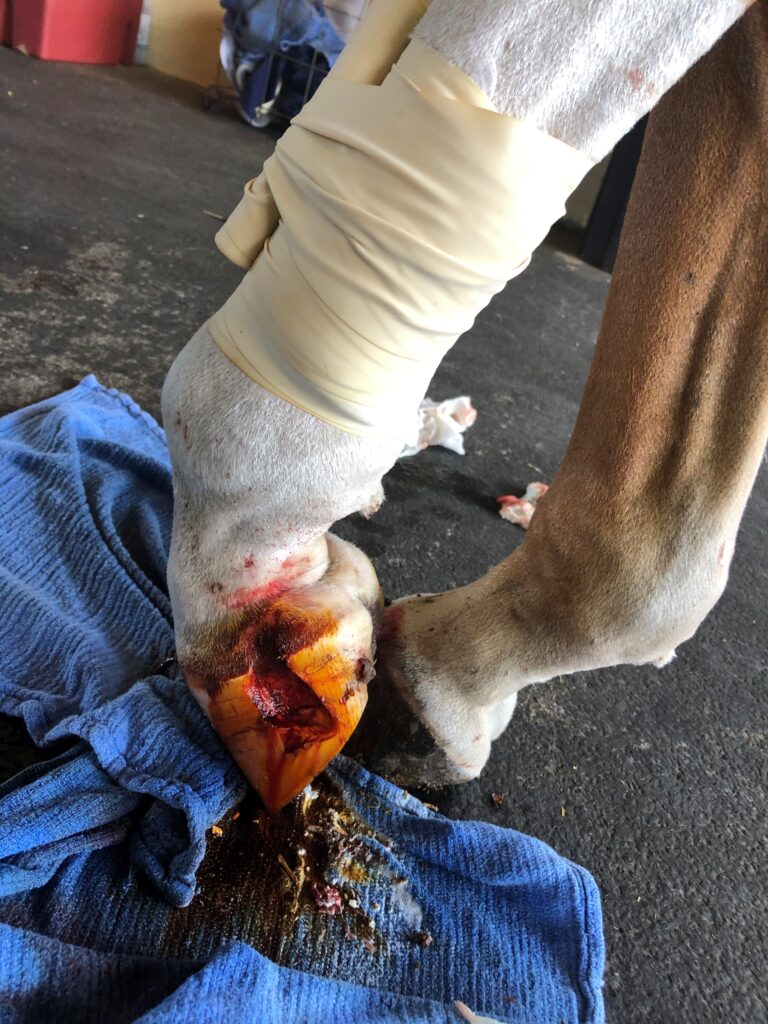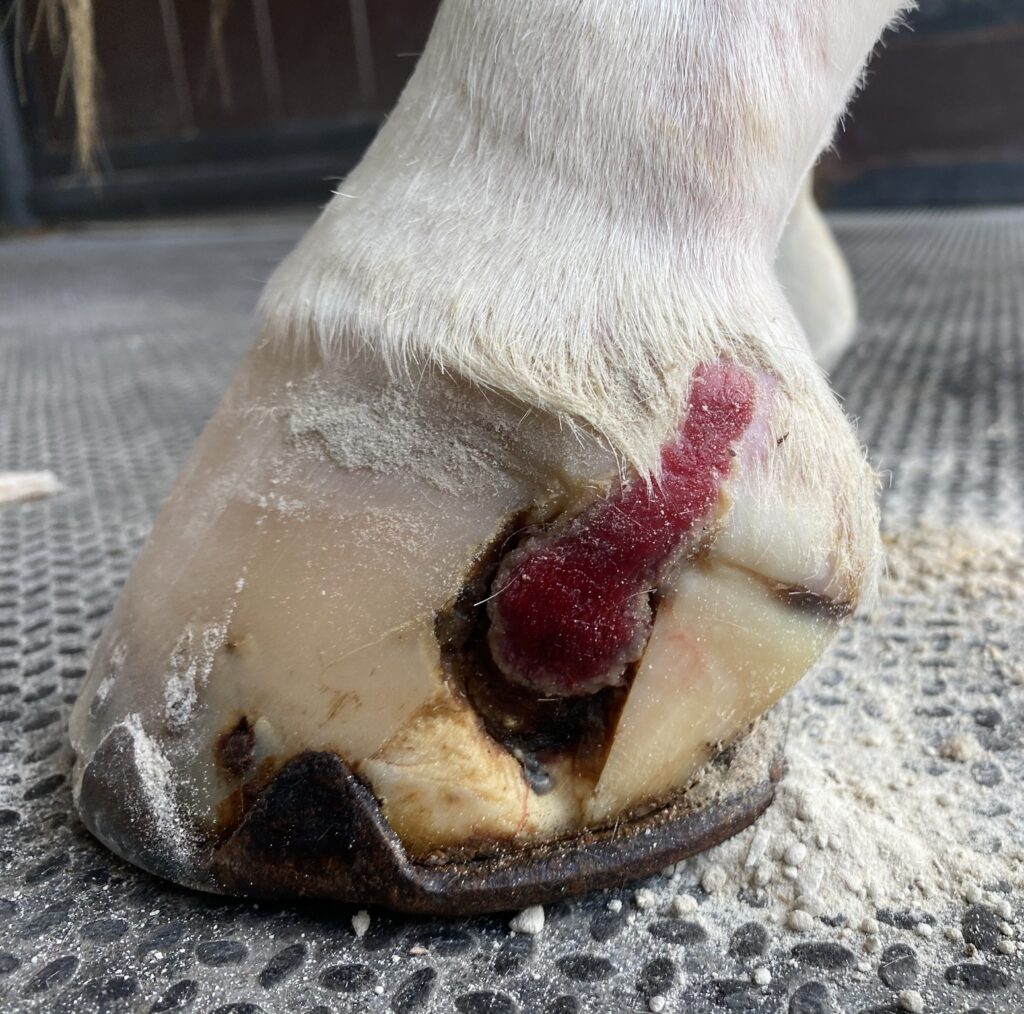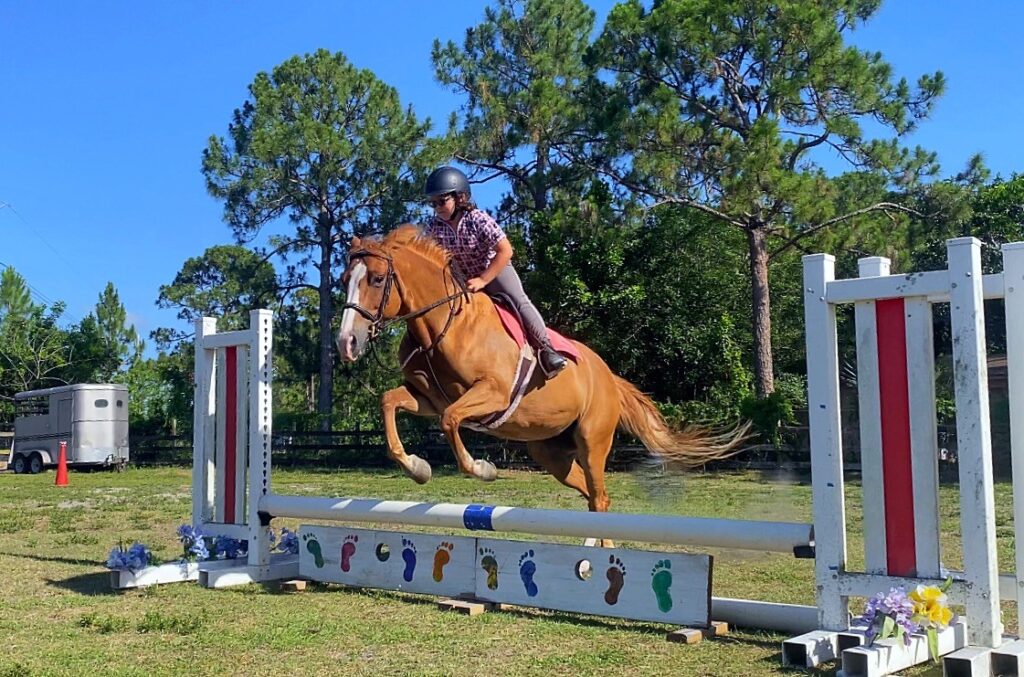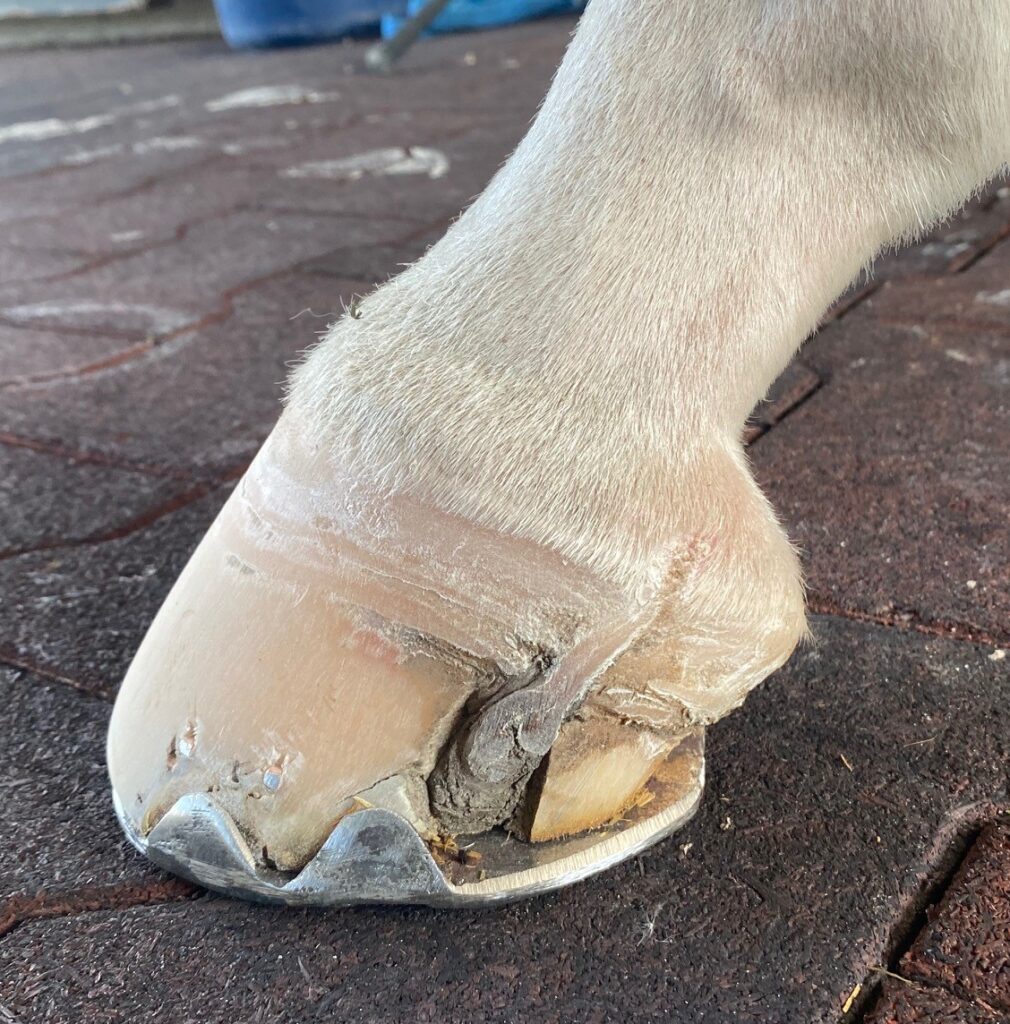Month: August 2021
Understanding Anhidrosis in Horses
Check out the August 2021 issue of POLO Players Edition and flip to the Equine Athlete section to read about anhidrosis. Palm Beach Equine Clinic veterinarians describe what a diagnosis of non-sweating entails for the sport horse, signs/symptoms, and best management practices to keep anhidrotic horses comfortable. Read about anhidrosis in horses by clicking here or on the image below.
For future educational resources on horse health, subscribe to the United States Polo Association official magazine POLO Players Edition, and follow Palm Beach Equine Clinic on Facebook, Instagram @pbequineclinic, and Twitter @palmbeachequine.
Featured in The Plaid Horse, Pony Edition of August 2021 Issue
The old adage “no foot, no horse” is undeniably one of the truest statements when it comes to the horse. Many intricate structures compose this foundation, and the overall health of the hoof is paramount. So, what happens when a portion of your horse’s hoof is suddenly missing?
Owners Josh and Laura Gross found themselves in this predicament when their barn’s owner, Ayriel Italia, called them to say that their daughter’s Welsh pony had cut herself and needed immediate medical attention. While in the paddock, Blue Melody – known as Melody – had gotten her left hind hoof underneath the gate and suffered a serious laceration.
“We were initially frantic without more information,” recalled Josh. “We consider Melody a family member, and her rider is an eight-year-old.” The self-professed novice horse-owner parents had been learning the ropes of equine health and care through supporting their young daughter Saylor’s passion for horses. They turned to the expertise and guidance of Italia and trainer Shanna Sachenbacher, who immediately called veterinarian Dr. Kathleen Timmins of Palm Beach Equine Clinic.

Upon arriving at the barn, Dr. Timmins saw that Melody had an approximately two-inch-wide section of her hoof missing.
“A full thickness portion of the lateral hoof wall and the coronet band had been completely excised,” described Dr. Timmins. “It was a deep wound that exposed the sensitive laminae of the hoof. Thankfully, a thin section of the weight-bearing portion of the hoof distal to the laceration was spared, and the wound did not go deep enough to communicate with the distal interphalangeal joint or the coffin bone.”

The sensitive laminae are an interlaced network of connective tissue, nerves, and blood vessels beneath the hoof wall. This highly-vascular layer attaches to and protects the coffin bone. Injuries to the coffin bone or joint structures can be devastating, often with long-term effects on the horse’s soundness and on the development of the hoof. In Melody’s case, Dr. Timmins found the laceration to be “more bark than bite,” as it did not affect those critical structures. Although Melody would likely have some degree of abnormal hoof growth from the damaged coronary band, Dr. Timmins had an encouraging prognosis for the pony.
“Dr. Timmins was so responsive that by the time we arrived at the barn to fully learn what had happened, the wound was already cleaned and wrapped, and we were told that Melody would make a full recovery,” explained Josh.

After an initial assessment and treatment of the wound at their barn, Melody was brought to Palm Beach Equine Clinic so that she could be observed and receive comprehensive medical care. Intravenous antibiotics were administered, and the laceration was thoroughly cleaned and bandaged with an added frog pad to support the hoof. Melody progressed well and was able to be discharged only 48 hours later. Along with a lesson in proper cleaning and wrapping of the wound, Dr. Timmins gave Melody’s owners and caretakers antibiotic and nonsteroidal anti-inflammatory medications. She also recommended a biotin supplement to aid in healthy hoof growth and advised that Melody would benefit from a few weeks of shoes with clips, which would provide lateral support to the section of the hoof wall that lost integrity.
With a full team supporting Melody’s recovery, the injury and medical care become less daunting to the Gross family. Only two weeks after the laceration, the wound showed great improvement, and Melody was able to be shod and very lightly worked. Four weeks after the injury, Melody received the green light from Dr. Timmins to resume full work with Saylor in the saddle.

“Dr. Timmins’ responsiveness and calm demeanor made all the difference. She put our minds at ease, took great care of our extended family member, and helped her get back on her feet (hooves!) more quickly than we expected.”
Josh Gross
Injuries to horses’ legs and hooves can be unnerving. Having a veterinarian immediately assess an injury and determine if it affects any vital structures is crucial for recovery. In case of an equine medical emergency, do not hesitate to call the veterinarians of Palm Beach Equine Clinic at 561-793-1599.

